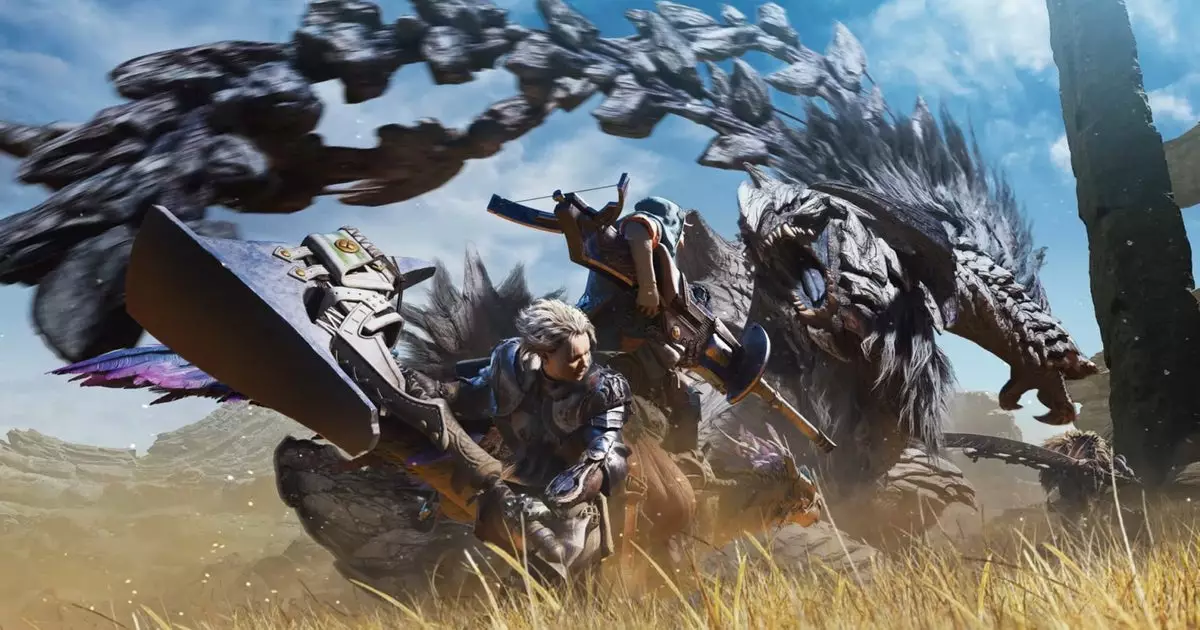The ever-evolving landscape of the Monster Hunter franchise has experienced numerous technological and gameplay innovations over the years. With the release of **Monster Hunter Wilds**, players are greeted with an array of enhancements, most notably in the diverse objects drawn from mythical creatures, such as wyverns, toad-like monsters, and arachnids. However, these updates raise questions about the effectiveness of weapon variety in this edition and whether it genuinely adds depth to the player’s experience or simply serves to enhance the visual appeal of previously familiar weaponry.
At first glance, the weapon roster in Wilds offers an appealing visual feast, with each weapon class sporting intricate designs and modified move sets. Yet underneath this veneer of uniqueness lies a foundation that can feel somewhat stale, particularly for long-time fans who may recognize many of the weapons from previous titles like **Monster Hunter Freedom 2** for PSP. For instance, while the addition of newer items like the Insect Glaive continues to excite, the bulk of the weapon lineup echoes earlier iterations, with the developers choosing a path of enhancement rather than revolution.
Capcom’s intent, as expressed by director **Yuya Tokuda**, leans towards refining and rebalancing established weapon types. This deliberate choice can be rationalized by the formidable challenge of integrating an entirely new weapon class into a diverse and already intricate system. Tokuda’s insights highlight the difficulty in ensuring that a 15th weapon adds genuine value and gameplay dimensions without overshadowing or overlapping with existing options.
The delicate dance of balancing existing weapon classes is evidenced as Capcom revisits the complexities encountered during development. Each weapon plays a pivotal role in the Monster Hunter experience, and the dialogue surrounding their relationships can serve to deepen player engagement with the game. This comprehensive redesign aims to breathe new life into familiar gameplay elements, allowing seasoned players to experience novelty within the context of their established knowledge.
However, this brings into question whether the substantial resources devoted to adjusting existing weapon parameters could yield more significant benefits if allocated to introducing completely new weapons. The industry-wide trend of continual innovation poses a challenge: can the incremental updates to weapons sustain player interest when innovative gameplay mechanics can often draw in a new audience?
In the face of these evolving gameplay dynamics, it’s important to recognize that each weapon in the Monster Hunter arsenal is intricately linked to its lore and origins. Rather than viewing weapons solely as tools for combat, players are invited to appreciate them as reflections of the monsters they are derived from. This philosophy leaves ample space for creativity in weapon design.
In terms of combat strategies, enhancing existing weapons can be more beneficial than simply adding new classes. Unique abilities and effective combos can significantly augment gameplay. Nevertheless, must we remain within the familiar shells of established weaponry? Is there potential for Capcom to venture into uncharted territories of weapon design, shifting their perspective and taking a more radical approach? Imagine a whimsical creature yielding a weapon completely contrary to the established norms—an odd monster constructed from balloons, or a fragile, triangular insect that reshapes combat dynamics entirely.
As **Monster Hunter Wilds** navigates its existing weaponry toward enhancement, the excitement surrounding future releases hangs in the balance. There is clearly potential for more creativity—infusing innovative mechanics and imaginative fresh weapon designs into the franchise can invigorate both long-term fans and newcomers alike. Finding that delicate balance between respect for legacy while daring to explore new ideas could very well define the future of the Monster Hunter series and keep the excitement alive in a world filled with ethereal beasts waiting to be conquered. By daring to dream up eclectic weapon origins and diversifying their arsenal, the franchise can embark on thrilling narratives that shape combat not only as an experience of tactical prowess but also as an art form.


Leave a Reply